
T=题名(书名、题名),A=作者(责任者),K=主题词,P=出版物名称,PU=出版社名称,O=机构(作者单位、学位授予单位、专利申请人),L=中图分类号,C=学科分类号,U=全部字段,Y=年(出版发行年、学位年度、标准发布年)
AND代表“并且”;OR代表“或者”;NOT代表“不包含”;(注意必须大写,运算符两边需空一格)
范例一:(K=图书馆学 OR K=情报学) AND A=范并思 AND Y=1982-2016
范例二:P=计算机应用与软件 AND (U=C++ OR U=Basic) NOT K=Visual AND Y=2011-2016
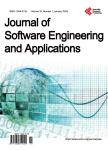
摘要:Analyzes the main way of product distribution for collaborative design. According to the requirement of manufacturing collaborative design, apply cloud computing in manufacturing collaborative design and come up the concept of product collaborative cloud design. Study the product collaborative design theory based on cloud computing and the general key technology of cloud computing, semantic web, intelligent matching selection algorithm, STEP and XML technology, version management and conflict resolution arithmetic and so on which related to this theory. The study object of this article is automotive product. Construct an automotive collaborative design system with the key technology to verify the feasibility and validity of the cloud basing collaborative design theory and related technology. This collaborative design system will overcome the weakness that resource and information can not be shared between different department in the same enterprise or different enterprises. Join up this system will help directly enterprise for collaborative design and the repetition construction of collaborative design platform of each enterprise will be avoid. It will reduce the investment of enterprises for constructing and managing collaborative design platform and further reduce the cost of product R&D with a better and more efficient design.
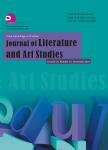
摘要:The study is to explore the test anxiety of three university English teachers in their collaborative learning community when they do their visiting scholar *** research questions are about the representations of test anxiety of the college English teacher collaborative learning community as visiting scholars,and the interaction between anxiety and their collaborative *** main data collection includes deep interview,field observation,online chatting,*** research finds that at the three stages of their learning,the participant shows various representations of test anxiety from cognitive,affective and behavioral perspectives,and collaborative learning community facilitates the participant have better execution in learning,more pressure released and much cognitive enhancement *** contrast,lack of collaborative learning environment in her working university and the specific anxiety for marriage in female participant are two additional findings in the study,which may prove the positive effect of collaborative learning on anxiety from another point of view.

摘要:collaborative platform on clustering applications for governments consists of six large-scale systems, including the clustering Government Internet portal system, clustering public-mailboxes collaboration system, clustering government affairs portal system, clustering emergency information collaboration system, clustering office automation collaboration system, and clustering messages collaboration systems. The appli-cation and technology architectures of the collaborative platform are elaborated in this paper,and the major key technologies on the platform are also expounded, which includes realization of many governments ap-plications’ scale integration and collaborative application, business model driven software development plat-form based on SOA, SSO, tans-departmental and cross-level multi-engine clustering protocol. Based on the "clustering application"design, to maximize the utilization of hardware, software resources and administra-tive resources of the provincial government collaborative platform, rural districts and counties can build their own platforms based on the provincial platform. The platform having been running for over 2 years shows that planning of urban and rural e-governments’ construction and maintenance is achieved, thus reducing costs greatly and improving governments’ functions.

摘要:Designing technologies is a process that relies on multiple interactions between design and use contexts. These interactions are essential to the development and establishment of technologies. This article seeks to understand the attempts of healthcare organisations to integrate use contexts into the design of healthcare technologies following insights of the theoretical approaches of social learning and user representations. We present a multiple case study of three healthcare technologies involved in improving elderly care practice. These cases were part of a Dutch quality improvement collaborative program, which urged that development of these technologies was not “just” development, but should occur in close collaboration with other parts of the collaborative program, which were more focused on implementation. These cases illustrate different ways to develop technologies in interaction with use contexts and users. Despite the infrastructure of the collaborative program, interactions were not without problems. We conclude by arguing that interactions between design and use are not naturally occurring phenomena, but must be actively organised in order to create effects.
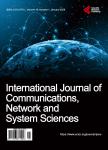
摘要:collaborative design can create added value in the design and production process by bringing the benefit of team work and cooperation in a concurrent and coordinated manner. However, distributed design knowledge and product data make the design process cumbersome. To facilitate collaborative design, an agent-based intelligent CAD platform is implemented. Intelligent agents are applied to the collaborative design. Adopting the JADE platform as framework, an intelligent collaborative design software (Co-Cad platform for short) is designed. In this platform, every man, design software, management software, equipment and resource is regarded as a single agent, the legacy design can be abstracted to be interaction between agents. Multimedia technology is integrated into Co-Cad platform, communication and identity authentication among collaborative designers from different areas are more convenient. Finally, an instance of collaborative design using Co-Cad platform is presented.
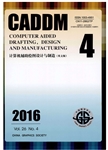
摘要:This paper present an architecture of Web-based collaborative 3D CAPP (Computer Aided Process Planning) system. It is a three tired system basis of the VRML and ActiveX technology. This Web-based system implements collaborative functions such as fixture design, process planning, G-code simulation, etc. The manufacturing resource management also discussed, which composed of equipments information management, fixtures information management, cutting tools information management and process pa- rameters information management. In the end, the procedure of collaborative process planning based on this Web-based system is in- troduced. This 3D CAPP system can be used for geographically distributed engineers to make optimized process planning of the part or assembly.

摘要:Oyler Wu collaborative是一所位于洛杉矶的建筑设计事务所,由Dwayne Oyler和Jenny Wu创立,以专注于工艺、材料、研究与设计的各种实验,挑战建筑环境的传统为特色。他们经常能为预算较低的专案找到具有创意性的解决方案,设计出切题的当代建筑作品。本次展览将以全面而详尽的交流对话模式,呈现Oyler Wu collaborative建筑事务所的作品.

摘要:The particular characteristics of Rapid Prototyping technologies, both in terms of constrains and opportunities, often require the reconfiguration of the product model to obtain the best compliance with the product functionalities and performances. Within this field of research, a knowledge-based tool named Design GuideLines collaborative Framework (DGLs-CF) was developed to support both the designers defining the product consistently with the manufacturing technologies and the manufacturers defining the building setup consistently with the product requirements. Present work is focused on enhancing the DGLs-CF knowledge base and on updating the DGLs-CF knowledge management by using the information gathered on some RP technologies. The added-value of this research is represented by an improvement in the Redesign/Reconfig- uration Package, the final result of the DGLs-CF adoption. This is a list of actions to be performed on the product model and on the process parameters to avoid the limitations of the technology and to exploit at best its opportunities.

摘要:Interactive patterns are able to promote the notion of reusability in groupware application development. Hence, these patterns support the comprehensiveness of both the interaction design and implementation while easing code modification for groupware application. Groupware is used to describe a broad range of technologies that support person-to-person collaboration. How to design and develop a groupware in an effective manner remains a research question worth exploring. This paper introduces a reusable method, patterns, to develop a single shared display application. Nine different interactive patterns that allow participants to interact collaboratively or non-collaboratively in a single shared display application are introduced in this paper. This is followed by the presentation of our quantitative results on the usability of the interactive patterns and the reusability of the patterns in designing and maintaining a single shared display application. From the results, not only are the patterns useful and easy to understand, the patterns actually ease the process of designing and maintenance during the application development under a single shared display.
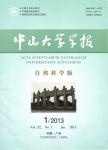
摘要:In order to improve the teaching evaluation effect,it is very significant to study the teachers evaluation indicator system and offer the algorithm of the evaluation *** teachers evaluation indicator system includes two parts:one part is the solid indicator of the teaching activities,that is,the fixed indicator;the other part is the Soft indicator of the teaching activities,that is,the Fuzzy *** solid indicator contains lessons,hours,achievements,etc;the Fuzzy indicator consists of teachers qualification,teaching methods,student understanding and satisfaction,etc.,which can not be easily measured by fixed *** indicator holds an important position during teaching *** there are no better indicator systems and quantified algorithm in higher education institutes these days,we will focus on studying the fuzzy indicator system here.
地址:宁波市钱湖南路8号浙江万里学院(315100)
Tel:0574-88222222
招生:0574-88222065 88222066
Email:yzb@zwu.edu.cn

